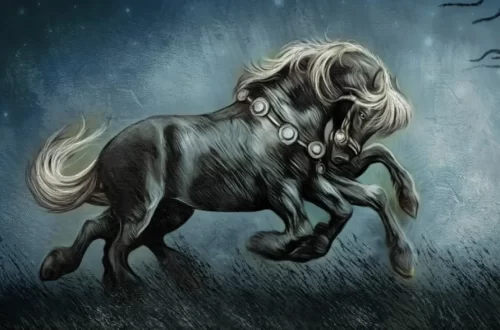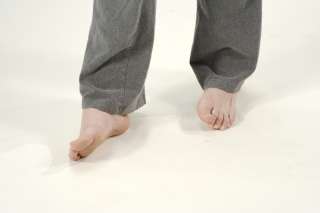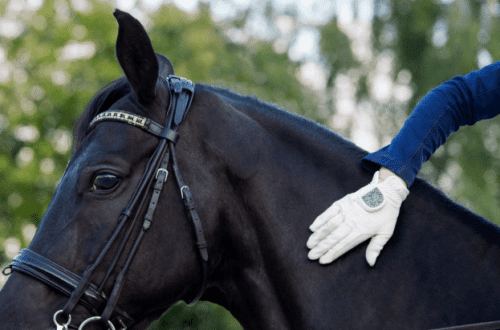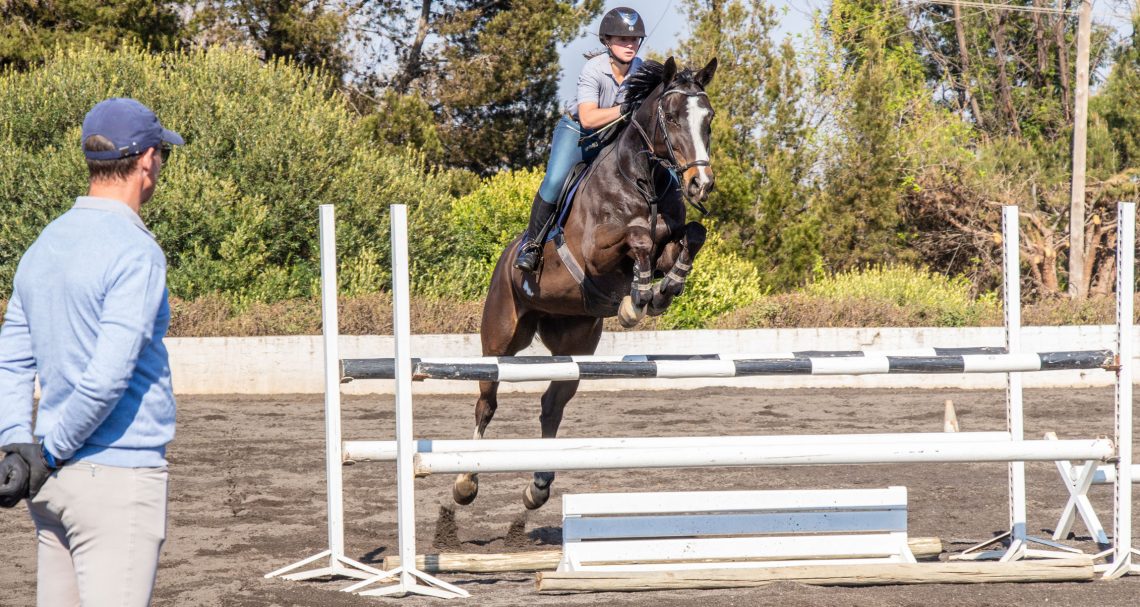
Three show jumping exercises for working in a small area
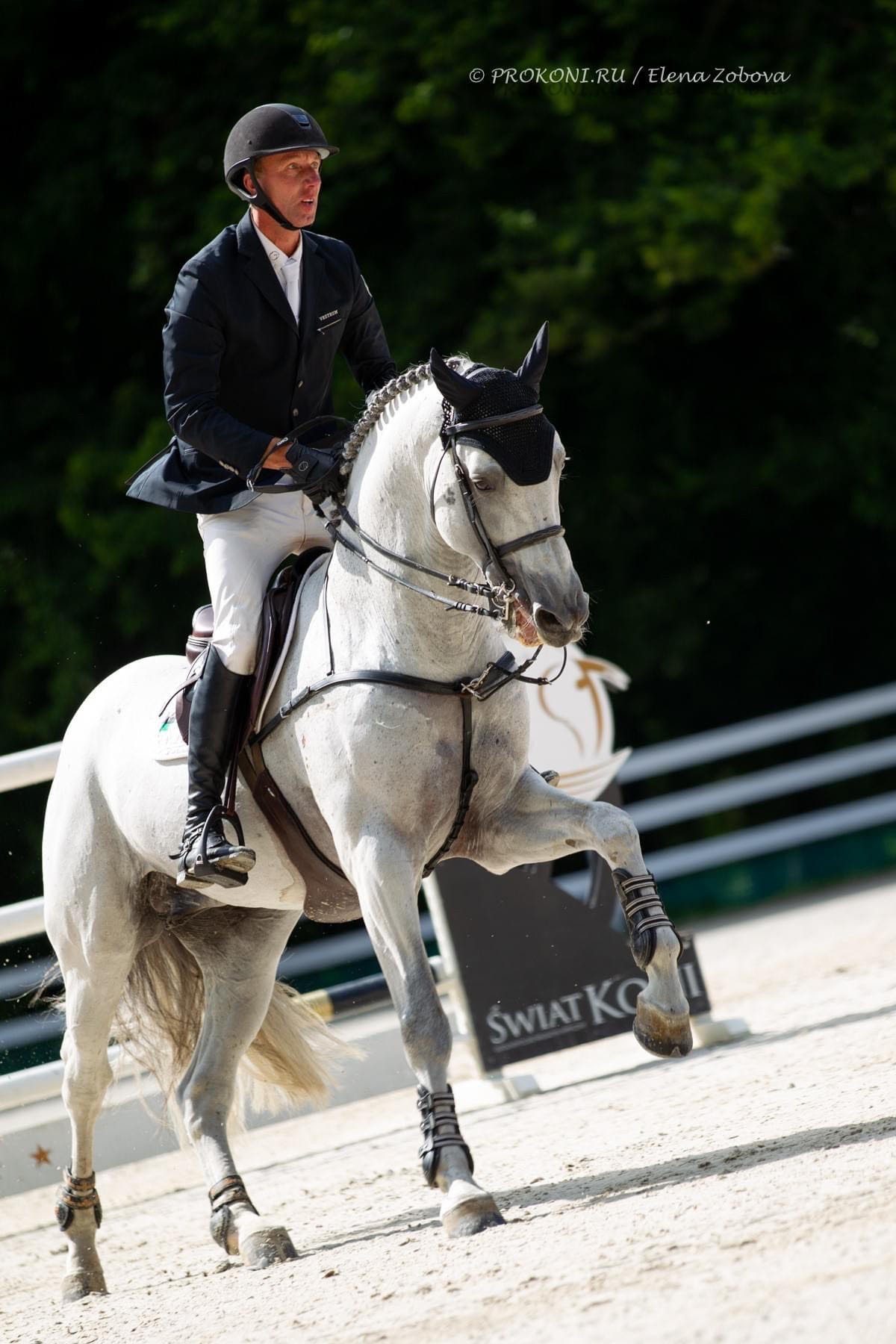
Photo: Elena Zobova.
Not all riders have the opportunity to train on large fields, so the FEI.org writers decided to answer the question of how to get the most out of working on small fields.
If you have ever watched tournaments taking place in Europe, you may have noticed that some of them take place in arenas much smaller than you would expect.
When done properly, jumping in small areas will help you practice cornering, make the best use of space, and develop your horse’s responsiveness.
Here we will present some show jumping exercises for those who work in fields the size of a dressage field or even smaller.
Choose your route.
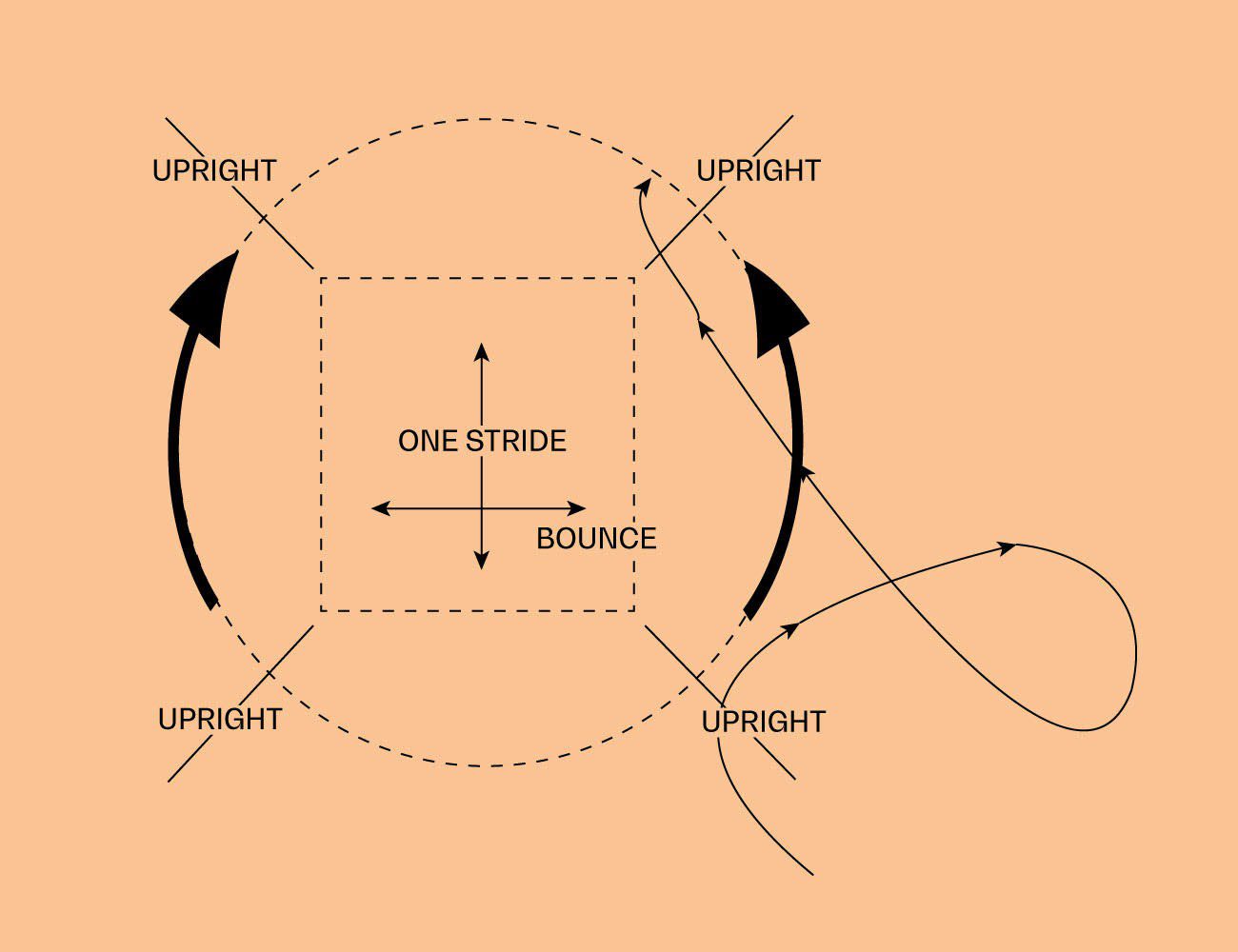
Exercise 1/ Photo: fei.org.
You can perform this exercise in different directions and combinations for different horses, by changing the height of the obstacles and the number of jumps in the combination.
By drawing a rectangle in the middle, you will get a line along the length and a line along the width. You can use this to change direction.
At each corner of the rectangle, a vertical is placed at an angle of 45 degrees. If you link all 4 verticals together, you get four volt jumps.
However, there are many more combinations. You can jump them as separate obstacles by jumping one vertical and then turning half a volt to the next one (as shown in the diagram), or choose one side of the rectangle and drive in a straight line between two obstacles, in which case each jump will be at an angle .
Gymnastic rows.
The first scheme.
Rows and lines are the best way to teach your horse how to work independently and improve style and technique in both horse and rider. Although you don’t have the option to put long lines with large distances between the obstacles, you can put some small lines that will help you with your horse.
This exercise is suitable for even the smallest grounds and can be used for horses of all levels.
Rows and lines are the best way to teach your horse to work independently and improve the style and technique of both horse and rider. Although you don’t have the option to put long lines with large distances between the obstacles, you can put some small lines that will help you with your horse.
This exercise is suitable for even the smallest grounds and can be used for horses of all levels.
Install Swedish oxer. Then measure a distance of one canter (if desired, the distance can be slightly reduced) and place the crosses on both sides of the oxer. This exercise can be jumped in both directions and will help your horse make power jumps. Crosses located on both sides of the oxer allow you to work on this exercise in both directions, help the horse to approach the obstacle in good time and, after landing, move away from the barrier in a straight line and with good momentum.
You can start from a low height, but one of the advantages of this exercise is that the height of the oxer can be increased significantly and it will be overcome without problems.
Second scheme.
For the second exercise, you need to place obstacles in the form of the letter Y, which will make it possible to go both to the right and to the left. This exercise will help you work on straightness and accuracy and develop mindfulness in your horse.
On one side of the platform near the letter A or C, we put two low crosses (with keys), then through the gallop pace – a higher vertical, then you need to set two oxers on the right and left (along the branches in the shape of Y). Ideally, there should be three canters from the vertical to the oxers, but if you have very little space, you can set this distance to two canters.
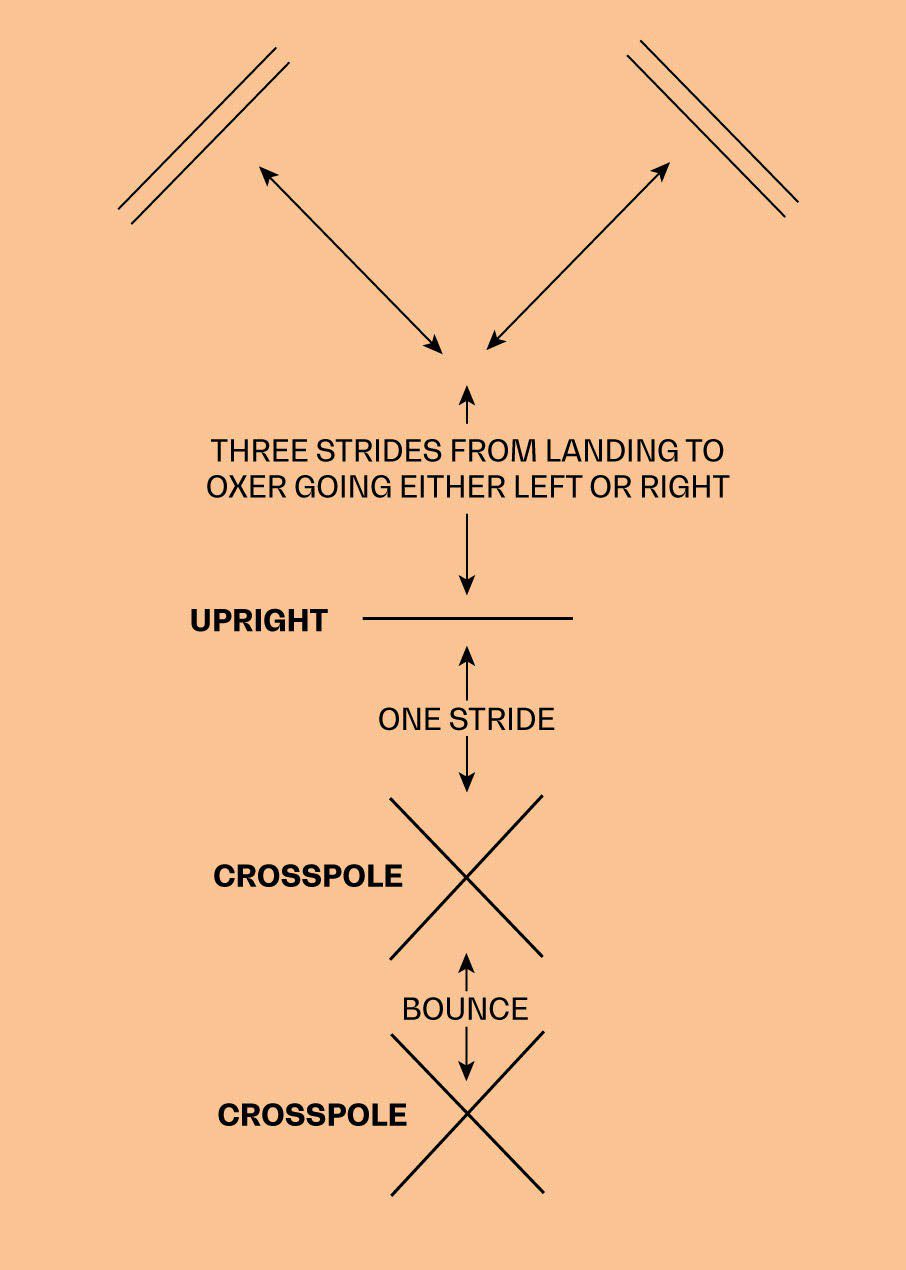
Exercise 2, second scheme / Photo: fei.org.
When entering the straight, you must look in the direction of the oxer you are about to cross. The goal is to land on the right foot and ride smoothly.
You have more than one option for this exercise, especially if you have enough room for the three canter distance to the oxers.
After landing, you can also turn left/right back and jump vertically along the midline. In this case, if you, for example, jumped an oxer to the left, after landing you turn right between the two oxers and enter three obstacles in a straight line. Depending on the size of the court, you can also jump the oxer to the left, after landing, turn right and enter the second oxer from the other side.
Turning exercise.
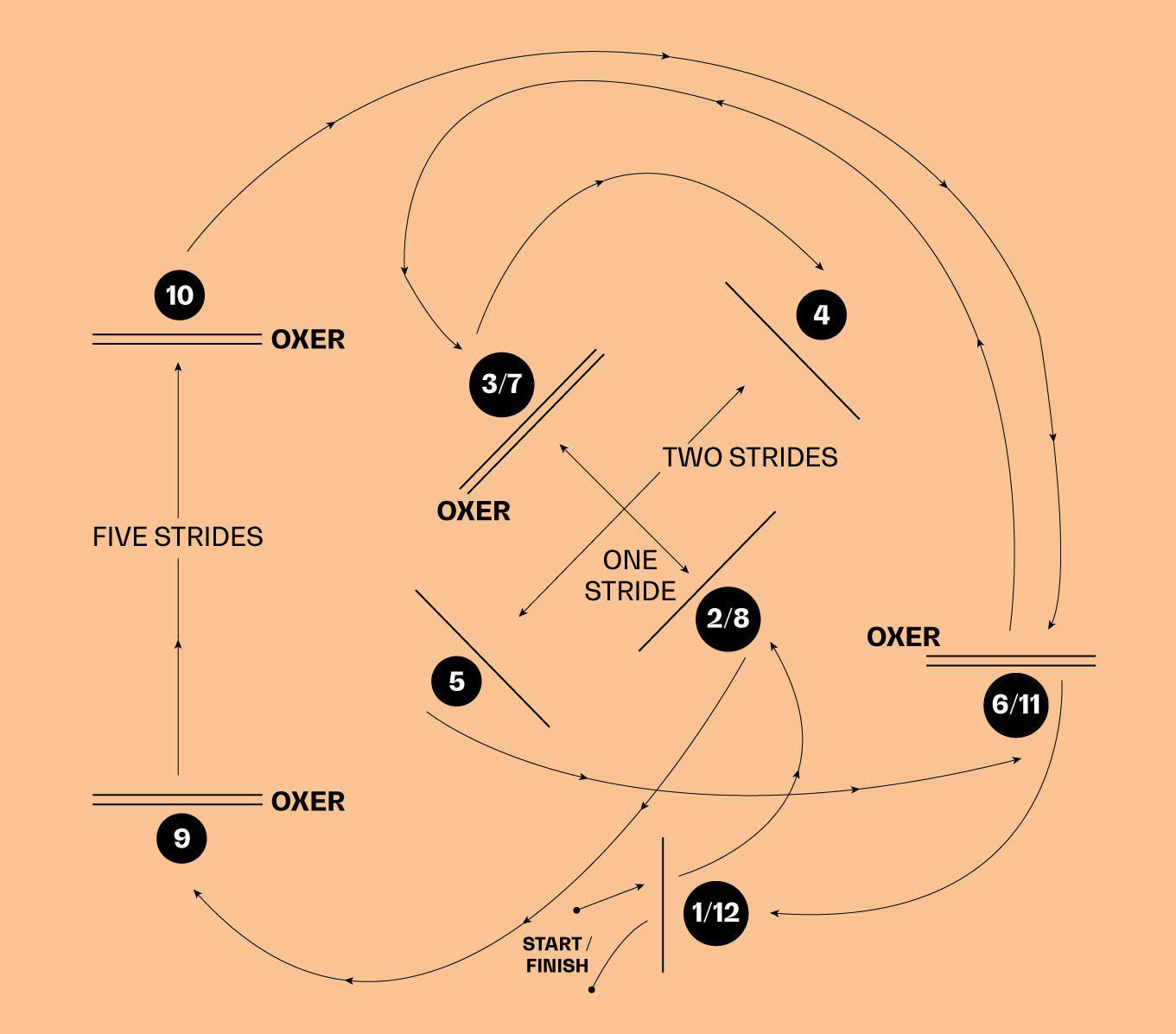
Exercise 3/ Photo: fei.org.
We all love straights, but we also work on transitions, good approach to the obstacle and on turns – for jump-off routes and high-speed show jumping, all of which are important for preparing for the tournament.
Working on a route in a small area involves two things: make sure most obstacles can be jumped in both directions, and make full use of the diagonals.
The diagram shows an example of a route for a small rectangular (or close to it) site. Each obstacle is numbered, although you can change the number or add something else. According to this scheme, you can start the route with obstacle 1 or 6.



